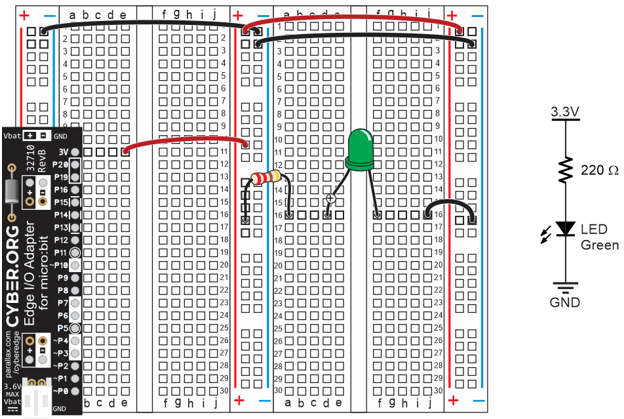
What it’s about
In these activities, you will set up and test your breadboard prototyping system for your micro:bit module. Along the way, you will learn some important circuit building and measuring skills.
Before you start
You will need:
- A What’s a Microcontroller with Python and micro:bit kit (Parallax #32750).
- A computer with a Chrome or Microsoft Edge browser and available USB 2.0 compatible port
Complete these tutorials first:
After You Finish
You will be able to:
- Connect wires and part leads together with a breadboard
- Build circuits on a breadboard
- Test for proper electrical connections, supply levels, and even part values
You will also be ready to move on to the next tutorial (coming soon!)
-
Breadboard Setup and Testing for micro:bit
-
Connect the micro:bit to a Breadboard
-
What is a Breadboard?
-
Parts & Circuit
-
First Electrical Connections with a Breadboard
-
How To Connect Two Wires
-
Parts & Circuit
-
Script
-
Node Tests
-
Try This - Probing the Board
-
How it Works
-
Set Power for Circuits
-
Parts & Circuit
-
Script
-
Test the Supply Rails
-
How the Supply Rail Tests Work
-
Try This - Electrical Potential
-
CYBERscope Setup
-
CYBERscope Voltmeter
-
First Breadboard Circuit
-
Parts: LED and Resistors
-
Build the LED Circuit
-
Check & Test the LED Circuit
-
How the LED Circuit Works
-
Resistor Codes & Electron Flow
-
Try This - Change the Resistor
-
Review and Practice
-
Solutions
-
